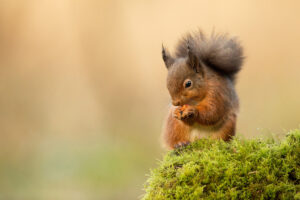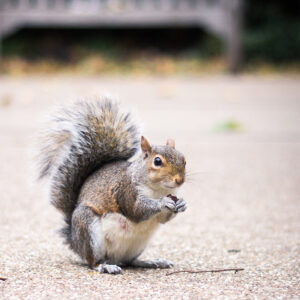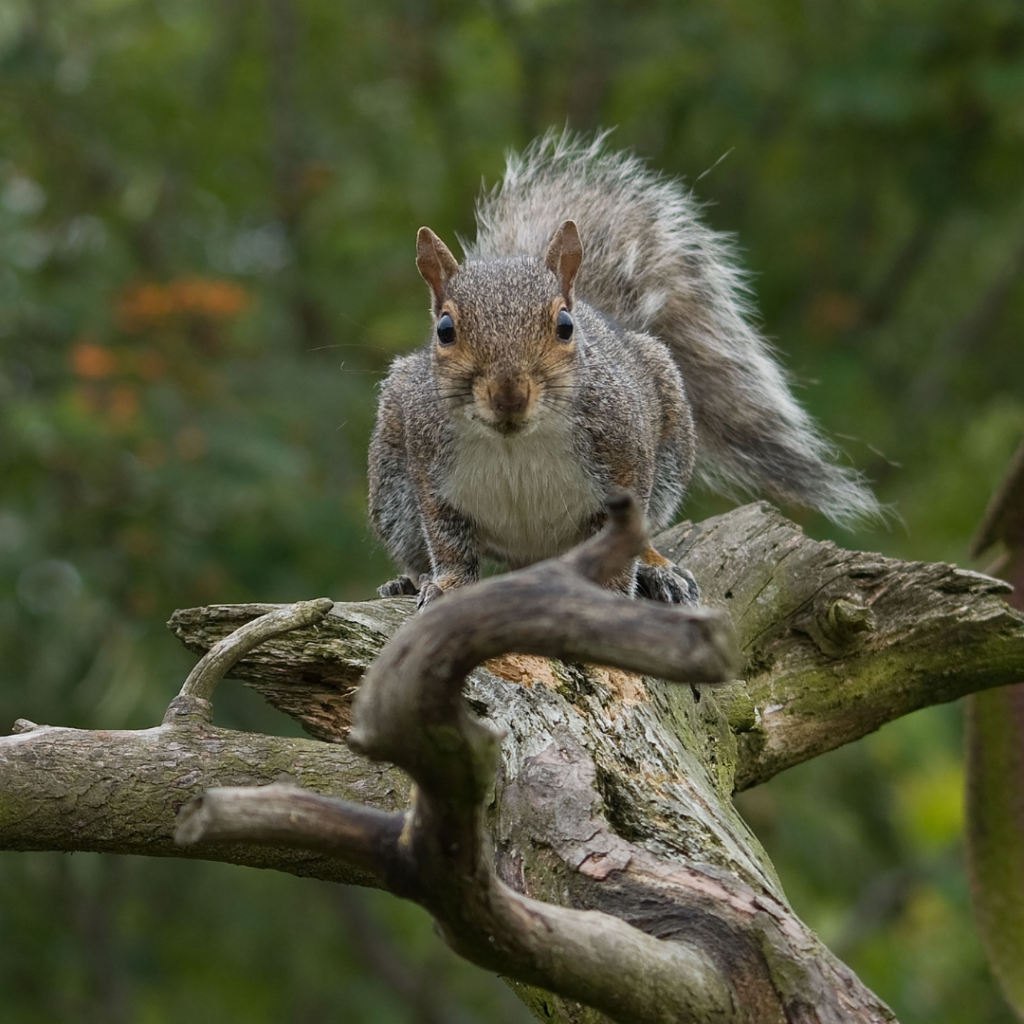A non-native species is a species that has been introduced to an area where it doesn’t naturally occur. Most of these are harmless but some threaten native species. These are called invasive non-native species (INNS). INNS have been identified as one of the top causes of global biodiversity loss. In Scotland, one of the most prominent INNS is the grey squirrel. But just why are grey squirrels a threat to our native reds?
Red squirrels
Red squirrels are the only native squirrel species in the UK. It’s now believed that there are around 220,000 remaining in Scotland, around 75% of the UK’s population. Red squirrels give birth to 1-2 litters a year each with around 3-5 kits. They don’t hibernate during winter, instead spending more time sleeping and less time foraging.
Grey squirrels
Grey squirrels are originally native to the USA and Canada and were first introduced to Britain in Victorian times, to decorate the gardens of large stately homes. They soon expanded their range, progressively replacing red squirrel populations in most of England and Wales, and many parts of Scotland. Grey squirrels are bigger than our native reds at between 550-650g (nearly double the 270-300g of red squirrels).

Why are grey squirrels a threat to red squirrels?
The greatest threat to the red squirrel’s future in Scotland is the invasive non-native grey squirrel. Larger and more robust, grey squirrels out-compete red squirrels for food and living space. This makes it difficult for red squirrels to successfully breed and for their young to survive. When grey squirrels move into a new area, red squirrels can be completely replaced within 15 years.
Red and grey squirrels eat the same types of tree seed including acorns. Interestingly, dietary studies have revealed that grey squirrels are better able to extract the proteins and energy stored in acorns than red squirrels. Where oak is present in a landscape it therefore gives grey squirrels a competitive advantage. Grey squirrels are almost twice the weight of red squirrels and consequently require more energy per day. In upland spruce forests where tree seeds are so small that grey squirrels find it difficult to eat enough to satisfy their basic energy needs the smaller red squirrel is better able to survive. These respective facts help explain why regionally where grey squirrels are present, red squirrels persist for longest in coniferous stands.
Perhaps one of the biggest threats from grey squirrels is the Squirrelpox virus. Carried by grey squirrels, the virus doesn’t appear to harm grey squirrels, however, reds have no natural immunity. The virus is usually fatal to red squirrels within two weeks. When Squirrelpox is present, grey squirrels can replace red populations around twenty times as fast as they can through competition alone.
What’s being done to help red squirrels?
Saving Scotland’s Red Squirrels works in key priority areas across the country to tackle the threat of the invasive grey squirrel. With the help of partners, landowners and local volunteers, the project is monitoring squirrel numbers across Scotland, managing the impact of Squirrelpox, and helping to combat the spread of grey squirrels in key strategic areas.
Head over to our sightings page to report your squirrel sightings today. Once verified these sightings will be added to the Scottish Squirrel Database, a national record of red and grey squirrel distributions which helps form the basis of our long-term plans for red squirrel conservation.

